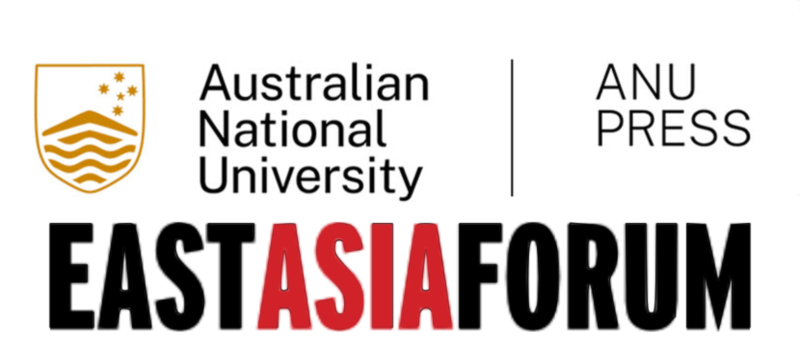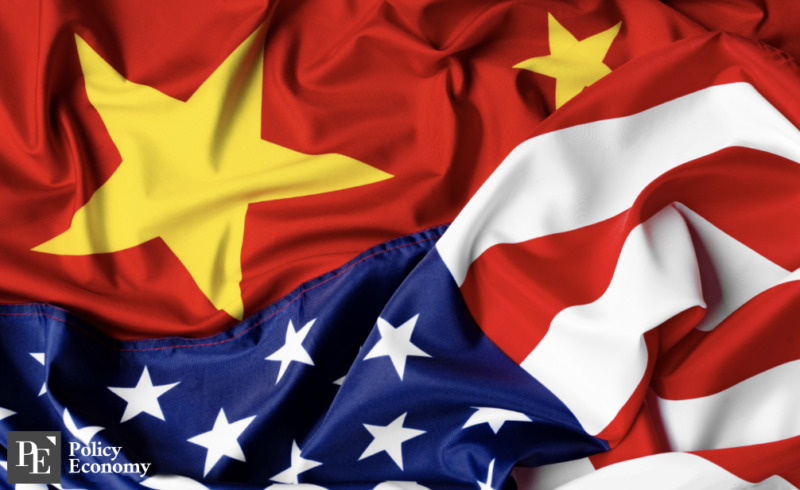[동아시아포럼] 아시아 시장을 배회하는 구조적 좀비 주의령
초완화 통화정책에 중독된 일본, 양적완화 축소에 대한 회복력 시험해야 일본 금융 시스템 보고서 “수익률 곡선 100베이시스 포인트 상승하면 역사적 리스크 발생” 일본의 전례 없는 공공 부채에 전례 없는 영향 일으킬 금리 상승
[동아시아포럼]은 EAST ASIA FORUM에서 전하는 동아시아 정책 동향을 담았습니다. EAST ASIA FORUM은 오스트레일리아 국립대학교(Australia National University)의 크로퍼드 공공정책 학교(Crawford School of Public Policy) 산하의 공공정책과 관련된 정치, 경제, 비즈니스, 법률, 안보, 국제관계 및 사회에 대한 분석 및 연구를 위한 플랫폼입니다.
저희 폴리시코리아(The Policy Korea)와 영어 원문 공개 조건으로 콘텐츠 제휴가 진행 중입니다.

ANU Press는 세계 최초이자 최대 규모의 오픈 액세스 대학 언론사입니다. 아시아 및 태평양 연구, 호주 정치, 인문학, 예술, 원주민 연구, 과학 등 광범위한 주제에 대해 동료 심사를 거친 연구를 출판합니다. 2004년에 설립된 ANU Press는 오픈 액세스 학술 분야의 혁신에 자부심을 가지고 있습니다. 현재까지 ANU Press는 1,000개 이상의 출판물을 발행했습니다.
썰물이 지나고 나서야 누가 벌거벗고 헤엄치고 있었는지 알게 됩니다. 오래된 농담이지만, 전 세계가 금융 격랑에 휩싸이면서 이에 따른 재정적 영향이 너무도 분명해지고 있습니다.
인플레이션과 금리는 대부분의 선진국에서 10년 이상 최저치를 기록했습니다. 이제 두 지표 모두 다시 상승세로 돌아섰고, 이는 아시아 경제에 있어 세 가지 주요 영역에서 골칫거리가 되고 있습니다.
첫 번째는 금융 불안정성입니다. 선진국, 특히 미국의 금리가 상승함에 따라 금융 자본이 아시아 개발도상국에서 수익률이 더 높은 선진국으로 유출되고 있습니다.
이로 인해 아시아의 개발도상국 경제는 압박을 받게 됩니다. 금리 인상이 성장에 미치는 부정적인 영향에도 불구하고 금리를 인상하여 자본을 경제에 유지하거나, 자본이 빠져나가 경제 발전에 필요한 장기 투자가 감소하여 어려움을 겪을 수 있습니다.
외화 부채를 보유한 아시아 경제의 경우 상황이 훨씬 더 빠르게 악화될 수 있습니다. 스리랑카가 대표적인 예입니다. 외국 자본이 경제를 떠나면서 환율이 치솟고 있습니다. 금융의 원죄라고 할 수 있는 부채가 미국 달러로 표시된 경우, 그 결과는 잔인합니다. 부채는 커지는 반면 부채 상환 능력은 줄어들게 됩니다.
선진국과 개발도상국을 막론하고 아시아 경제의 두 번째 골칫거리는 이른바 ‘좀비기업’입니다. 정치인들은 이 사실을 직면하는 것을 좋아하지 않지만, 사실 기업의 실패는 일반적으로 좋은 일입니다.
비생산적이고 경쟁력이 없는 기업은 더 혁신적인 라이벌에 의해 시장에서 퇴출될 것입니다. 기존 비즈니스에 고용된 노동자와 자본은 혁신적인 신규 비즈니스에 흡수됩니다. 그 결과 경제의 자원인 자본과 노동이 더 생산적으로 사용되어 임금이 높아지고 전체적인 생활 수준이 향상됩니다.
수십 년간 지속된 저금리와 저렴한 자금은 경제학자 조지프 슘페터가 ‘창조적 파괴’라고 불렀던 이 과정을 늦추었을 가능성이 있습니다. 그 결과 좀비기업, 즉 이미 도산했어야 하지만 초저금리 덕분에 계속 살아남아 잠재적 성장에 걸림돌이 되는 기업이 생겨났습니다.
금리와 인플레이션이 상승하면 더 많은 기업이 실패할 것입니다. 미국에서 실패하는 기업의 비율은 팬데믹 이전보다 2.5배나 높습니다. 이것은 좋은 일입니다. 하지만 정책 입안자들은 ‘시스템적 좀비’를 조심해야 합니다.
이는 아시아 경제가 직면한 세 번째 큰 골칫거리입니다. 좀비기업이 나머지 경제나 금융 시스템에 구조적으로 영향을 미친다면, 그 좀비의 붕괴는 경제 전반에 큰 결과를 초래할 수 있습니다. 중국에서는 부동산 부문의 지급 능력에 대한 우려가 있지만, 더 중요한 좀비기업이 있습니다. 이런 일이 발생할 가능성이 가장 높은 상황은 ‘좀비기업’이 ‘좀비은행’인 경우입니다.
실리콘밸리 은행의 붕괴와 크레디트스위스와 몇몇 다른 은행이 직면한 문제가 대표적인 사례입니다. 금리와 인플레이션이 상승하는 통화 정책의 정상화는 현재 우리가 겪고 있는 문제와 밀접한 관련이 있습니다.
모든 은행은 본질적으로 위험합니다. 하지만 실리콘밸리 은행은 다른 리그에 속합니다.
은행은 만기 불일치에 기반한 비즈니스 모델을 가지고 있기 때문에 본질적으로 위험합니다. 은행은 고객으로부터 예금을 받아 단기 대출을 하고 25년 모기지 같은 상품을 통해 장기 대출을 합니다. 많은 예금자가 한꺼번에 돈을 인출하는 뱅크런이 발생하면 은행은 무너집니다.
이러한 위험은 은행 자체와 정부 규제 기관이 관리합니다. 실리콘밸리 은행의 경우 두 기관 모두 충분히 신속하게 대처하지 못했습니다.
이 은행은 경제의 단일 부문(기술 부문)과 규제 당국이 보장하는 금액을 훨씬 초과하는 예금을 보유한 단일 유형의 고객(스타트업)에 압도적으로 노출되어 매우 위험한 포트폴리오를 개발했습니다. 예금을 장기 국채 및 기타 유형의 부채에 예치함으로써 낮은 금리에 대한 단방향 베팅을 헤지하는 데 실패했습니다.
결국 규제 당국은 이러한 엄청난 위험 누적을 알아차리지 못했고, 조기에 대응하지 못했으며, 공황 상태의 뱅크런을 막을 수 있는 규제 프레임워크를 제대로 준비하지 못했습니다.
실리콘밸리 은행과 크레디트스위스의 사례는 아시아 경제에 중요한 교훈을 제공합니다.
금융 불안정, 좀비기업, 은행권의 압박이라는 세 가지 골칫거리에 직면한 아시아 경제는 규제 체계를 정비해야 합니다. 그 핵심은 더 엄격한 감시와 더 나은 위기 대응에 있을 것입니다.
감시를 강화한다는 것은 실리콘밸리 은행과 달리 규제 당국이 은행 시스템의 위험이 현실화되기 전에 이를 모니터링할 수 있어야 한다는 의미입니다. 아시아 규제 당국은 아시아 금융 위기 이후 이러한 감시에 많은 투자를 해왔습니다. 하지만 이제는 시나리오 계획과 스트레스 테스트 연습을 통해 이러한 기관을 테스트해야 할 때입니다.
위기 대응을 위해서는 아시아 규제 당국이 위기 확산과 악화를 막을 수 있는 규제 프레임워크를 갖추고 있어야 합니다. 즉, 한 은행이 유동성 경색을 겪을 경우 중앙은행이 신속하게 개입하여 지원할 수 있고, 한 은행이 지급 능력 위기를 겪을 경우 나머지 금융 시스템에 시스템적 피해를 주지 않고 해결할 수 있습니다.
이번 주 주요 기사에서 마사히코 다케다는 이번 달에 취임한 우에다 가즈오 일본은행 총재의 시선에서 이러한 과제를 고려합니다.
다케다는 일본이 세 가지 중요한 도전에 직면해 있다고 말합니다.
첫째, 일본 당국은 초완화 통화정책에 중독되었을지 모르지만 이제 일본의 생산량 격차가 좁혀졌기 때문에 점진적인 양적완화 축소에 대한 회복력을 시험해 볼 수 있는 좋은 시기가 될 것입니다.
둘째, 최근 일본 금융 시스템 보고서에 따르면 일부 금융 리스크, 특히 수익률 곡선이 100 베이시스 포인트 상승할 경우 금융 기관의 대차대조표(특히 지방 및 지방 은행의 대차대조표)에 대한 리스크가 2002년 기록이 시작된 이래 최고 수준에 근접한 것으로 나타났습니다.
셋째, 금리 상승은 일본의 전례 없는 공공 부채에도 중대한 영향을 미칠 수 있습니다. 다케다는 금리가 100베이시스 포인트만 상승해도 2026년까지 정부의 연간 부채 상환 비용이 3조6,000억 엔, 즉 올해 소비세 수입의 15%에 달할 것이라고 경고합니다.
다케다의 경고는 간단합니다. 진정제를 오래 사용할수록 진정제 없이 살기가 더 어려워진다는 거죠.
아시아 경제는 지금부터 준비를 시작해야 합니다.
Beware the systemic zombies roaming in Asian markets
It’s only when the tide goes out that we discover who’s been swimming naked. It’s an old gag, but the financial implications of this are becoming all too apparent as the world hits a bout of financial turbulence.
A passerby walks past an electric monitor displaying various countries’ stock price index outside a bank in Tokyo, Japan, 22 March 2023 (Photo: Reuters/Issei Kato).
Both inflation and interest rates have been at rock bottom for more than a decade in most advanced economies. Both are now back up again with a vengeance, and that’s causing headaches for Asian economies in three key areas.
The first is financial instability. As interest rates rise in advanced economies, particularly the United States, financial capital flows out of Asia’s developing countries and into the advanced economies where returns are higher.
This puts Asia’s developing economies in a squeeze. They can either raise interest rates to keep capital in their economies despite the negative impact of rate rises on growth, or they can let the capital leave and suffer from the reduced long-term investment they need for economic development.
Things can get much worse more quickly for Asian economies with foreign denominated debt: Sri Lanka is a prime example. As foreign capital leaves their economies, their exchange rates fall against an already rising US dollar. If their debts are denominated in US dollars — the original sin in finance — the consequence is brutal: their debts get bigger while their ability to service those debts shrinks.
The second headache for Asian economies — both developed and developing alike — is so-called zombie firms. Politicians don’t like to confront the fact, but the failure of businesses is normally a good thing.
If a business is unproductive and uncompetitive, it will be knocked out of the market by more innovative rivals. The workers and capital employed in those old businesses are soaked up into the innovative new business. The outcome is that the economy’s resources — capital and labour — are being used more productively, resulting in higher wages and growing living standards.
Decades of low interest rates and cheap money may have slowed this process of what economist Joseph Schumpeter called ‘creative destruction’. The result is zombie firms: businesses which should be dead but, thanks to ultra-low interest rates, continue to survive and are a drag on potential growth.
As interest rates and inflation rise, more businesses will fail. The rate of businesses failing in the US is 2.5 times higher than before the pandemic. This is a good thing. But policymakers need to beware of the ‘systemic zombie’.
This is the third big headache facing Asian economies. If a zombie firm has systemic implications for the rest of the economy or financial system, then the collapse of that zombie could have big economy-wide consequences. In China, the worry is about the solvency of the real estate sector, but there are more important zombie firms to worry about. The situation where this is most likely to occur is where the ‘zombie firm’ is a ‘zombie bank’.
The collapse of the Silicon Valley Bank and the troubles facing Credit Suisse and a handful of other banks are cases in point. The normalisation of monetary policy with rising interest rates and inflation is intimately linked to the challenges we are seeing.
All banks are inherently risky. But Silicon Valley Bank was in another league.
Banks are inherently risky because their business model is based on a maturity mismatch. They borrow short-term by taking deposits from customers and lend long-term through products like 25-year mortgages. If enough depositors pull their money out at the same time — a bank run — the bank collapses.
This risk is managed by the banks themselves and by government regulators. In the case of Silicon Valley Bank, both failed to act sufficiently quickly.
The bank developed a portfolio that was extremely risky by being overwhelmingly exposed to a single sector in the economy (the tech sector) and a single type of client (start-ups) who had deposits far in excess of what is insured by regulators. By parking the deposits in long-term government bonds and other types of debt, they failed to hedge their one-way bet on interest rates remaining low.
The regulators, in turn, failed to notice this huge accumulation of risk, failed to respond early and failed to be properly prepared with a regulatory framework that would stop a panicked bank run in the first place.
The experience of Silicon Valley Bank and Credit Suisse provide important lessons to Asian economies.
Faced with these three headaches — financial instability, zombie firms and banking pressures — Asia’s economies need to get their regulatory houses in order. At the heart of this is tighter surveillance and better crisis response.
Surveillance means that, unlike with the Silicon Valley Bank, regulators can monitor risks in the banking system before they materialise. Asian regulators have invested heavily in such surveillance since the Asian financial crisis. But now is the time to test those institutions through scenario planning and stress test exercises.
Crisis response means that Asian regulators have a regulatory framework in place that can stop a crisis from spreading and getting worse. It means that if a bank suffers a liquidity crunch, the central bank can step in quickly to support it, or if a bank suffers a solvency crisis, it can be resolved without causing systemic damage to the rest of the financial system.
In this week’s lead article, Masahiko Takeda considers these challenges in the context of Kazuo Ueda assuming his new role as Governor of the Bank of Japan this month.
Japan, says Takeda, is facing three critical challenges.
First, Japanese authorities may have become addicted to ultra-loose monetary policy but now that the output gap has closed in Japan, it would be a good time to test the patient’s resilience to a gradual reduction in heavy medication.
Second, the latest Japanese financial system report found that some financial risks are close to the highest level since records began in 2002, specifically the risk to financial institution’s balance sheets (especially those of regional and local banks) from a 100-basis point upward shift in the yield curve.
And third, rising interest rates could also have significant implications for Japan’s unprecedented public debt. Takeda warns that a mere 100 basis point upward shift in interest rates would increase the government’s annual debt servicing costs, reaching 3.6 trillion yen, or 15 per cent of consumption tax revenue this year, by 2026.
Takeda’s warning is simple: the longer you use sedatives, the harder it is to live without them.
Asia’s economies need to start preparing now.



























